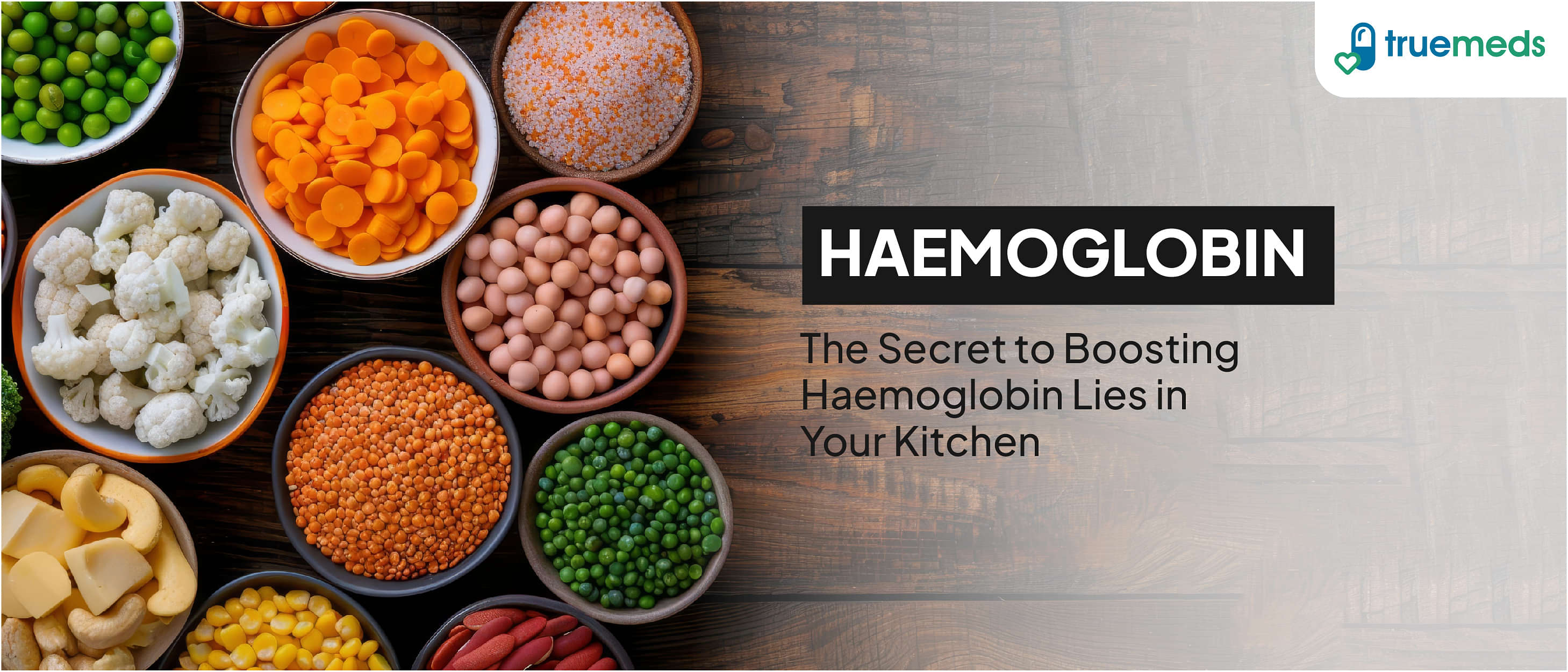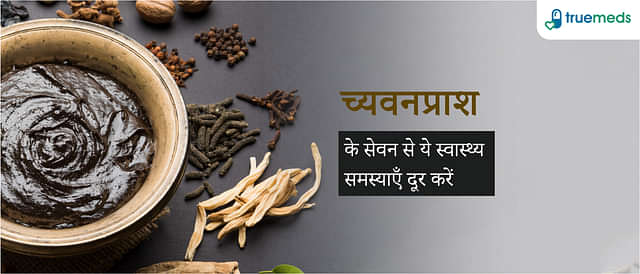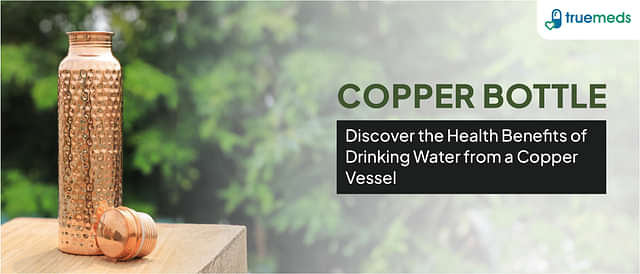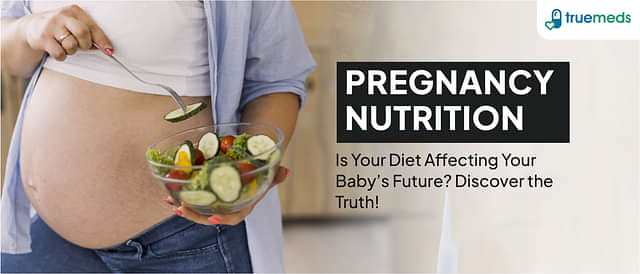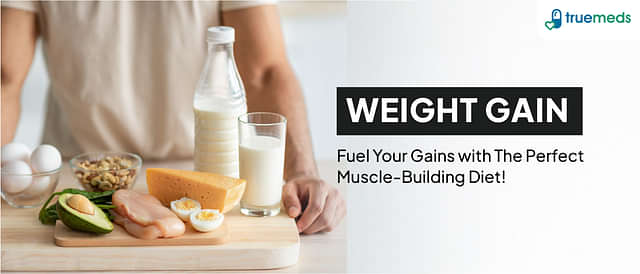How to Increase Hemoglobin Level at Home?
Last updated on : 01 Dec, 2025
Read time : 8 min
Feeling unusually tired lately? Noticing a bit of breathlessness during your routine, or that your skin looks paler than usual? These subtle signs could indicate low haemoglobin levels, a key component of your blood responsible for carrying oxygen throughout your body. When haemoglobin drops, your energy levels and overall vitality can take a hit. It is important to consult a physician for a proper diagnosis and to rule out underlying conditions, as low haemoglobin (anaemia) can be caused by more than just nutritional deficiencies [4], [5].
The good news is that there are several simple and natural ways to potentially support your body in improving your haemoglobin count right from home. In this guide, we’ll explore easy dietary changes, lifestyle tips, and home remedies that can help increase haemoglobin levels safely and as a complement to professional medical advice.
Increase Haemoglobin by Eating Iron-Rich Food
Eating iron-rich foods is highly beneficial for individuals with low haemoglobin levels. Iron plays a crucial role in the formation of haemoglobin, the protein in red blood cells that carries oxygen throughout the body. Including iron-rich foods in your diet helps boost haemoglobin production and supports the overall increase of red blood cell count, which may help improve energy levels and reduce symptoms of fatigue if the cause is dietary iron deficiency [6], [7].
Some iron-rich foods readily available at home are:
- Leafy greens (spinach, methi, amaranth leaves)
- Lentils, beans
- Pumpkin seeds, nuts
- Red meat, liver
- Dates, figs
Also, consume vitamin C-rich food along with iron-rich food. Iron absorption is improved by vitamin C. Squeezing some fresh lemon over your iron-rich foods can help increase iron absorption in the body.
Some natural sources of high vitamin C include:
- Citrus fruits like oranges, lime
- Strawberries
- Tomatoes
- Papaya, Guava
Vitamin A and beta-carotene can enhance iron absorption, particularly non-heme iron from plant sources. These nutrients may form soluble complexes with iron in the intestinal lumen, improving its bioavailability and helping counteract the inhibitory effects of compounds like phytates. Beta-carotene is abundant in red, orange, and yellow fruits and vegetables, such as carrots, sweet potatoes, winter squash, mangoes, beets, and pumpkins. While grapes and raisins contain antioxidants, they are not significant sources of beta-carotene.
Increasing Folate Intake
Folate is a vitamin B subtype that plays an essential role in haemoglobin production. It may help produce heme, the part of your red blood cells that contains haemoglobin. Folate deficiency hinders the maturation of your red blood cells, causing a type of anaemia called megaloblastic anaemia and potentially leading to low haemoglobin levels.
Good sources of folate include the following:
- Meat
- Spinach
- Rice
- Peanuts
- Black-eyed peas
- Kidney beans
- Avocadoes
- Lettuce
Maximising Iron Absorption
Calcium is an essential nutrient required for healthy bones. However, high-dose calcium intake, such as from supplements, can make it difficult for your body to absorb iron at the same time of consumption [1]. Therefore, it’s essential to space out calcium supplements or calcium-rich foods (like dairy products) when taking an iron supplement.
Foods high in calcium include:
- Dairy products
- Soybeans
- Figs
Phytic acid is also an inhibitor of the absorption of iron. However, it only alters iron absorption during a single meal and not throughout the day. Traditional methods like soaking, sprouting, or fermenting phytic acid-rich foods (like legumes and grains) can help reduce their phytic acid content. Try to avoid combining phytic acid-rich foods with iron-rich foods to increase iron absorption.
Complementary Lifestyle Practices
A) Gentle Movement and Yoga
Integrating gentle physical movement and specific yoga postures can complement medical treatment for anaemia, though they are not a substitute for it. Practices like the Locust Pose (Shalabhasana) and the Lotus Pose (Padmasana) may help stimulate internal organs. Additionally, practices like the Sun Salutation (Surya Namaskar), Boat (Paripurna Navasana), Bow (Dhanurasana), and Bridge (Setu Bandhasana) poses have been suggested to potentially improve circulation [2]. It is important to perform all yoga poses under the guidance of a qualified instructor, especially if you have an existing medical condition.
B) Breathing Practices
Breathing exercises, or Pranayama, are supportive for overall vitality. For some individuals with anaemia, practices like Right Nostril breathing (Surya Bhedana Pranayama) are sometimes recommended in Ayurvedic or Yoga therapy. This practice is believed to generate warmth and boost energy levels but should be approached as a complementary tool [3]. Always practice Pranayama after consulting with a qualified yoga therapist.
C) Traditional and Supplementary Tips
- Copper-Infused Water: According to traditional practices, copper is believed to play a role in iron metabolism. Fill a copper glass or cup with water and keep it overnight; then, drink it in the morning. While a lack of copper can lead to anaemia, drinking copper water is not a proven treatment for iron deficiency anaemia [4].
- Taking Iron Supplements: A person with significantly low haemoglobin levels will often be advised to take iron supplements by a physician. The dosage will vary based on an individual’s levels and must be closely monitored by a doctor, as excess iron can be harmful and cause side effects.
Conclusion
Raising haemoglobin levels requires identifying and treating the underlying cause, which may include iron deficiency, B12 or folate deficiency, chronic disease, or blood loss. A balanced diet rich in iron, folate, and Vitamin B12 is a foundational step. It is especially important for strict vegetarians or vegans to consult their doctor or a registered dietitian to ensure they are meeting all necessary nutrient requirements.
In many cases, supplementation or medical treatment is necessary. Always consult your physician before starting any supplements or making significant changes to your health regimen.
Frequently Asked Questions (FAQs)
Which fruit is rich in haemoglobin?
Pomegranates are rich in haemoglobin-boosting nutrients, particularly iron and Vitamin C. Consuming this fruit can aid in supporting red blood cell production and improving overall blood health. Apples, mulberries, and dates are other popular fruits often recommended.
What to drink to increase haemoglobin?
To boost your haemoglobin levels, consider these iron-rich drinks, such as prune juice. A cup of prune juice provides about 2.8 mg of iron (approximately 16% of the daily value for adults) and may boost energy. Beetroot juice is also rich in iron and antioxidants; studies suggest beetroot juice may support haemoglobin production and overall blood parameters [8]. Besides, a spinach smoothie is also a refreshing, iron-packed drink.
Can I increase haemoglobin in 1 week?
You can support an increase in haemoglobin levels in a week by significantly increasing iron and folate intake. Include iron-rich foods like meat, fish, beans, and leafy greens. Maximize iron absorption by pairing these foods with vitamin C (found in oranges, strawberries, and papaya). However, clinically significant increases in haemoglobin typically take several weeks to months, especially when correcting a deficiency. Do not expect severe anaemia to be cured in one week. Additionally, you may take iron supplements only if advised by a doctor.
Is a haemoglobin of 17 good or bad?
A haemoglobin level of 17 g/dL is considered at the higher end of the normal range or slightly high. For adult males, the healthy range is typically 13.8 to 17.2 g/dL, while for adult females, it’s 12.1 to 15.1 g/dL [4]. If your levels fall outside this range, it’s important to seek medical advice.
What is the danger level of haemoglobin?
Low haemoglobin levels (below 13.8 g/dL for men and below 12.1 g/dL for women) can indicate anaemia, leading to symptoms like fatigue, weakness, and shortness of breath. Levels are generally considered severe or critical when they fall below 8 g/dL, which typically requires immediate medical attention and may necessitate a blood transfusion [4]. High haemoglobin levels (above 17.2 g/dL for men and 15.1 g/dL for women) can be a sign of polycythemia or other conditions, increasing the risk of blood clots, strokes, and heart attacks. If your haemoglobin levels are lower or higher than normal, consult with your doctor on how to manage your condition.
References
[1] Lönnerdal, B. (2010). Calcium and iron absorption – Mechanisms and public health relevance. International Journal for Vitamin and Nutrition Research, 80(4-5), 293–299. https://doi.org/10.1024/0300-9831/a000036
[2] K Krishna Sharma, Rashmitha. (2018). Effect of yoga therapy on anaemia in menorrhagic subjects. IJRAR December 2018, 5(4). https://www.ijrar.org/papers/IJRAR1944614.pdf
[3] Nalini, S. R., Nath, R., & Anand, B. (2025). Enhancing Iron Deficiency Anemia Outcomes: Integrating Psychological Relaxation with Ayurvedic Treatment. Brain Behavior and Immunity Integrative, 100135. https://www.sciencedirect.com/science/article/pii/S2949834125000339
[4] Anaemia. (n.d.). Who.Int. Retrieved October 30, 2025, from https://www.who.int/news-room/fact-sheets/detail/anaemia
[5] Sharma, J., Devanathan, S., Sengupta, A., & Rajeshwari, P. N. (2024). Assessing the prevalence of iron deficiency anemia and risk factors among children and women: A case study of rural Uttar Pradesh. Clinical Epidemiology and Global Health, 26(101545), 101545. https://doi.org/10.1016/j.cegh.2024.101545
[6] Wang, R., Xu, S., Hao, X., Jin, X., Pan, D., Xia, H., Liao, W., Yang, L., & Wang, S. (2025). Anemia during pregnancy and adverse pregnancy outcomes: a systematic review and meta-analysis of cohort studies. Frontiers in Global Women’s Health, 6, 1502585. https://doi.org/10.3389/fgwh.2025.1502585
[7] Hasan, M. M., Soares Magalhaes, R. J., Garnett, S. P., Fatima, Y., Tariqujjaman, M., Pervin, S., Ahmed, S., & Mamun, A. A. (2022). Anaemia in women of reproductive age in low- and middle-income countries: progress towards the 2025 global nutrition target. Bulletin of the World Health Organization, 100(3), 196–204. https://doi.org/10.2471/BLT.20.280180
[8] Das, A., Mukherjee, S., Mondal, P. (2024). A Randomized Controlled Study on the Effect of Beetroot Juice on Haemoglobin Concentration in Adult Females. Journal of Clinical and Diagnostic Research, 18(6), BC01–BC04. https://doi.org/10.7860/JCDR/2024/66863.19503
Disclaimer
Our healthcare experts have carefully reviewed and compiled the information presented here to ensure accuracy and trustworthiness. It is important to note that this information serves as a general overview of the topic and is for informational purposes only. It is not intended to diagnose, prevent, or cure any health problem. This page does not establish a doctor-patient relationship, nor does it replace the advice or consultation of a registered medical practitioner. We recommend seeking guidance from your registered medical practitioner for any questions or concerns regarding your medical condition.
Popular Articles
Recommended Articles
Recent Articles
Company
About UsHealth ArticleHealth StoriesHealth LibraryDiseases & Health ConditionsAyurvedaAll MedicinesAll BrandsNeed HelpFAQSecuritySubscribe
Registered Office Address
Grievance Officer
Download Truemeds
Contact Us
Our customer representative team is available 7 days a week from 9 am - 9 pm.
v4.8.2
2025 - Truemeds | All rights reserved. Our content is for informational purposes only. See additional information.
Our Payment Partners









